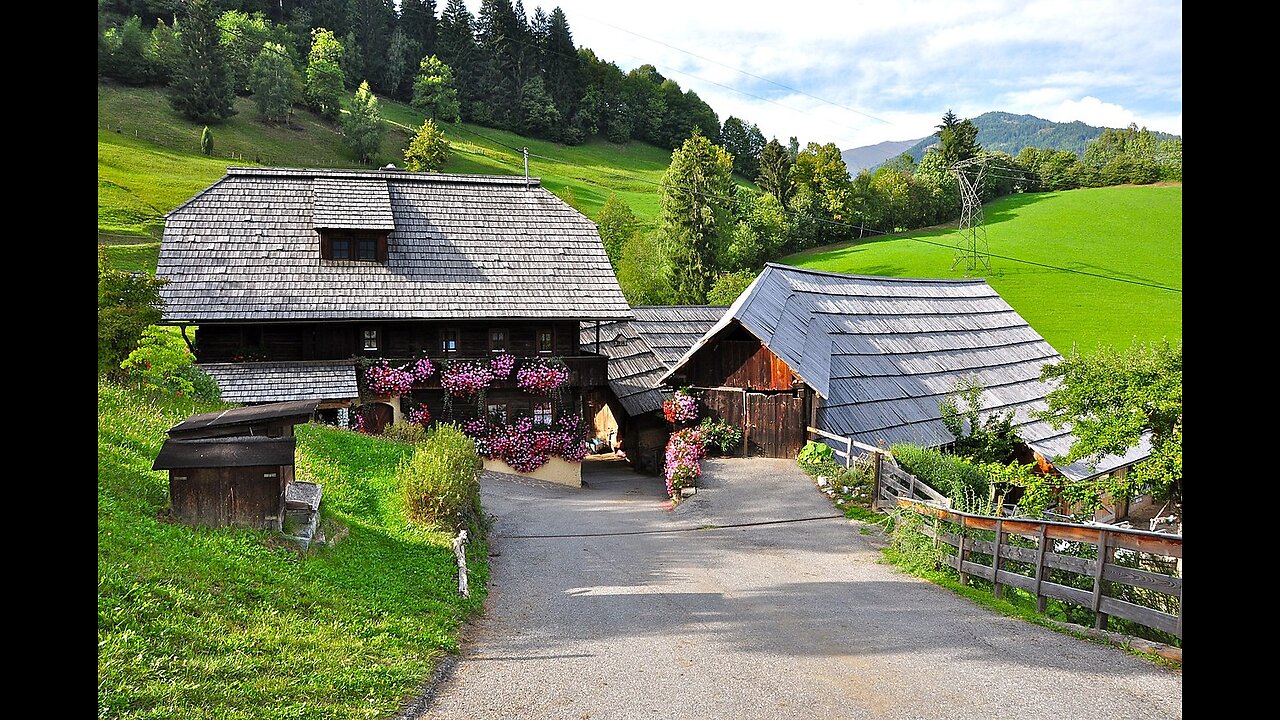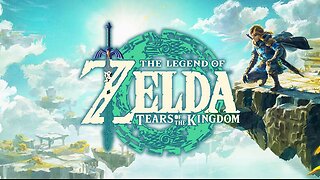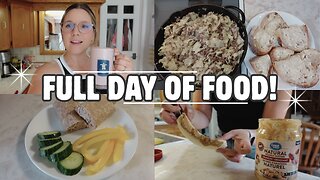Premium Only Content

How Big Business Killed the Family Farm
The dark side of history: https://thememoryhole.substack.com/
A family farm is generally understood to be a farm owned and/or operated by a family.[3] It is sometimes considered to be an estate passed down by inheritance.
Although a recurring conceptual and archetypal distinction is that of a family farm as a smallholding versus corporate farming as large-scale agribusiness, that notion does not accurately describe the realities of farm ownership in many countries. Family farm businesses can take many forms, from smallholder farms to larger farms operated under intensive farming practices. In various countries, most farm families have structured their farm businesses as corporations (such as limited liability companies) or trusts, for liability, tax, and business purposes. Thus, the idea of a family farm as a unitary concept or definition does not easily translate across languages, cultures, or centuries, as there are substantial differences in agricultural traditions and histories between countries and between centuries within a country. For example, in U.S. agriculture, a family farm can be of any size, as long as the ownership is held within a family. A 2014 USDA report shows that family farms operate 90 percent of the nation's farmland, and account for 85 percent of the country's agricultural production value.[4] However, that does not at all imply that corporate farming is a small presence in U.S. agriculture; rather, it simply reflects the fact that many corporations are closely held. In contrast, in Brazilian agriculture, the official definition of a family farm (agricultura familiar) is limited to small farms worked primarily by members of a single family;[5] but again, this fact does not imply that corporate farming is a small presence in Brazilian agriculture; rather, it simply reflects the fact that large farms with many workers cannot be legally classified under the family farm label because that label is legally reserved for smallholdings in that country.
Farms that would not be considered family farms would be those operated as collectives, non-family corporations, or in other institutionalised forms. At least 500 million of the world's [estimated] 570 million farms are managed by families, making family farms predominant in global agriculture.[6][7]
Definitions
An "informal discussion of the concepts and definitions" in a working paper published by Food and Agriculture Organization of the United Nations in 2014 reviewed English, Spanish and French definitions of the concept of "family farm". Definitions referred to one or more of labor, management, size, provision of family livelihood, residence, family ties and generational aspects, community and social networks, subsistence orientation, patrimony, land ownership and family investment.[8] The disparity of definitions reflects national and geographical differences in cultures, rural land tenure, and rural economies, as well as the different purposes for which definitions are coined.
The 2012 United States Census of Agriculture defines a family farm as "any farm where the majority of the business is owned by the operator and individuals related to the operator, including relatives who do not live in the operator’s household"; it defines a farm as "any place from which $1,000 or more of agricultural products were produced and sold, or normally would have been sold, during a given year."[9]
The Food and Agriculture Organization of the United Nations defines a "family farm" as one that relies primarily on family members for labour and management.[10]
In some usages, "family farm" implies that the farm remains within the ownership of a family over a number of generations.[11]
Being special-purpose definitions, the definitions found in laws or regulations may differ substantially from commonly understood meanings of "family farm". For example, In the United States, under federal Farm Ownership loan regulations, the definition of a "family farm" does not specify the nature of farm ownership, and management of the farm is either by the borrower, or by members operating the farm when a loan is made to a corporation, co-operative or other entity. The complete definition can be found in the US Code of Federal Regulations 7 CFR 1943.4.
History
Dispersed settlement landscape in Carinthia.
Mountain farms in South Tyrol.
In the Roman Republic, latifundia, great landed estates, specialised in agriculture destined for export, producing grain, olive oil, or wine, corresponding largely to modern industrialized agriculture but depending on slave labour instead of mechanization, developed after the Second Punic War and increasingly replaced the former system of family-owned small or intermediate farms in the Roman Empire period. The basis of the latifundia in Spain and Sicily was the ager publicus that fell to the dispensation of the state through Rome's policy of war in the 1st century BC and the 1st century AD.
In the collapse of the Western Roman Empire, the largely self-sufficient villa-system of the latifundia remained among the few political-cultural centres of a fragmented Europe. These latifundia had been of great importance economically, until the long-distance shipping of wine and oil, grain and garum disintegrated, but extensive lands controlled in a single pair of hands still constituted power: it can be argued that the latifundia formed part of the economic basis of the European social feudal system, taking the form of Manorialism, the essential element of feudal society,[12] and the organizing principle of rural economy in medieval Europe.[13] Manorialism was characterised by the vesting of legal and economic power in a Lord of the Manor, supported economically from his own direct landholding in a manor (sometimes called a fief), and from the obligatory contributions of a legally subject part of the peasant population under the jurisdiction of himself and his manorial court. Manorialism died slowly and piecemeal, along with its most vivid feature in the landscape, the open field system. It outlasted serfdom as it outlasted feudalism: "primarily an economic organization, it could maintain a warrior, but it could equally well maintain a capitalist landlord. It could be self-sufficient, yield produce for the market, or it could yield a money rent."[14] The last feudal dues in France were abolished at the French Revolution. In parts of eastern Germany, the Rittergut manors of Junkers remained until World War II.[15] The common law of the leasehold estate relation evolved in medieval England. That law still retains many archaic terms and principles pertinent to a feudal social order. Under the tenant system, a farm may be worked by the same family over many generations, but what is inherited is not the farm's estate itself but the lease on the estate. In much of Europe, serfdom was abolished only in the modern period, in Western Europe after the French Revolution, in Russia as late as in 1861.
In contrast to the Roman system of latifundia and the derived system of manoralism, the Germanic peoples had a system based on heritable estates owned by individual families or clans. The Germanic term for "heritable estate, allodium" was *ōþalan (Old English ēþel), which incidentally was also used as a rune name; the gnomic verse on this term in the Anglo-Saxon rune poem reads:
[Ēðel] byþ oferleof æghwylcum men, gif he mot ðær rihtes and gerysena on brucan on bolde bleadum oftast.
"[An estate] is very dear to every man, if he can enjoy there in his house whatever is right and proper in constant prosperity."
In the inheritance system known as Salic patrimony (also gavelkind in its exceptional survival in medieval Kent) refers to this clan-based possession of real estate property, particularly in Germanic context. Terra salica could not be sold or otherwise disposed; it was not alienable. Much of Germanic Europe has a history of overlap or conflict between the feudal system of manoralism, where the estate is owned by noblemen and leased to the tenants or worked by serfs, and the Germanic system of free farmers working landed estates heritable within their clan or family. Historical prevalence of the Germanic system of independent estates or Höfe resulted in dispersed settlement (Streusiedlung) structure, as opposed to the village-centered settlements of manoralism.
Mention of "hofe" in Beowulf
In German-speaking Europe, a farmyard is known as a Hof; in modern German this word designates the area enclosed by the farm buildings, not the fields around them, and it is also used in other everyday situations for courtyards of any type (Hinterhof = 'back yard', etc.). The recharacterized compound Bauernhof was formed in the early modern period to designate family farming estates and today is the most common word for 'farm', while the archaic Meierhof designated a manorial estate. Historically, the unmarked term Hof was increasingly used for the royal or noble court.[16] The estate as a whole is referred to by the collective Gehöft (15th century); the corresponding Slavic concept being Khutor. Höfeordnung is the German legal term for the inheritance laws regarding family farms, deriving from inheritance under medieval Saxon law. In England, the title of yeoman was applied to such land-owning commoners from the 15th century.
In the early modern and modern period, the dissolution of manoralism went parallel to the development of intensive farming parallel to the Industrial Revolution. Mechanization enabled the cultivation of much larger areas than what was typical for the traditional estates aimed at subsistence farming, resulting in the emergence of a smaller number of large farms, with the displaced population partly contributing to the new class of industrial wage-labourers and partly emigrating to the New World or the Russian Empire (following the 1861 emancipation of the serfs). The family farms established in Imperial Russia were again collectivized under the Soviet Union, but the emigration of European farmers displaced by the Industrial Revolution contributed to the emergence of a system of family estates in the Americas (Homestead Act of 1862).
Thomas Jefferson's argument that a large number of family estates are a factor in ensuring the stability of democracy was repeatedly used in support of subsidies.[17]
Developed world
Perceptions of the family farm
In developed countries the family farm is viewed sentimentally, as a lifestyle to be preserved for tradition's sake, or as a birthright. It is in these nations very often a political rallying cry against change in agricultural policy, most commonly in France, Japan, and the United States, where rural lifestyles are often regarded as desirable. In these countries, strange bedfellows can often be found arguing for similar measures despite otherwise vast differences in political ideology. For example, Pat Buchanan and Ralph Nader, both candidates for the office of President of the United States, held rural rallies together and spoke for measures to preserve the so-called family farm. On other economic matters they were seen as generally opposed, but found common ground on this one.
The social roles of family farms are much changed today. Until recently, staying in line with traditional and conservative sociology, the heads of the household were usually the oldest man followed closely by his oldest sons. The wife generally took care of the housework, child rearing, and financial matters pertaining to the farm. However, agricultural activities have taken on many forms and change over time. Agronomy, horticulture, aquaculture, silviculture, and apiculture, along with traditional plants and animals, all make up aspects of today's family farm. Farm wives often need to find work away from the farm to supplement farm income and children sometimes have no interest in farming as their chosen field of work.
Bolder promoters argue that as agriculture has become more efficient with the application of modern management and new technologies in each generation, the idealized classic family farm is now simply obsolete, or more often, unable to compete without the economies of scale available to larger and more modern farms. Advocates argue that family farms in all nations need to be protected, as the basis of rural society and social stability.
Viability
According to the United States Department of Agriculture, ninety-eight percent of all farms in the U.S. are family farms. Two percent of farms are not family farms, and those two percent make up fourteen percent of total agricultural output in the United States, although half of them have total sales of less than $50,000 per year. Overall, ninety-one percent of farms in the United States are considered "small family farms" (with sales of less than $250,000 per year), and those farms produce twenty-seven percent of U.S. agricultural output.[18]
Depending on the type and size of independently owned operation, some limiting factors are:
Economies of scale: Larger farms are able to bargain more competitively, purchase more competitively, profit from economic highs, and weather lows more readily through monetary inertia than smaller farms.
Cost of inputs: fertilizer and other agrichemicals can fluctuate dramatically from season to season, partially based on oil prices, a range of 25% to 200% is common over a period of a few years.
oil prices: Directly (for farm machinery) and somewhat less directly (long-distance transport; production cost of agrichemicals), the cost of oil significantly impacts the year-to-year viability of all mechanized conventional farms.
commodity futures: the predicted price of commodity crops, hogs, grain, etc., can determine ahead of a season what seems economically viable to grow.
technology user agreements: a less publicly known factor, patented GE seed that is widely used for many crops, like cotton and soy, comes with restrictions on use, which can even include who the crop can be sold to.
wholesale infrastructure: A farmer growing larger quantities of a crop than can be sold directly to consumers has to meet a range of criteria for sale into the wholesale market, which include harvest timing and graded quality, and may also include variety, therefore, the market channel really determines most aspects of the farm decisionmaking.
availability of financing: Larger farms today often rely on lines of credit, typically from banks, to purchase the agrichemicals, and other supplies needed for each growing year. These lines are heavily affected by almost all of the other constraining factors.
government economic intervention: In some countries, notably the US and EU, government subsidies to farmers, intended to mitigate the impact on domestic farmers of economic and political activities in other areas of the economy, can be a significant source of farm income. Bailouts, when crises such as drought or the "mad cow disease" problems hit agricultural sectors, are also relied on. To some large degree, this situation is a result of the large-scale global markets farms have no alternative but to participate in.
government and industry regulation: A wide range of quotas, marketing boards and legislation governing agriculture impose complicated limits, and often require significant resources to navigate. For example, on the small farming end, in many jurisdictions, there are severe limits or prohibitions on the sale of livestock, dairy and eggs. These have arisen from pressures from all sides: food safety, environmental, industry marketing.
real estate prices: The growth of urban centers around the world, and the resulting urban sprawl have caused the price of centrally located farmland to skyrocket, while reducing the local infrastructure necessary to support farming, putting effectively intense pressure on many farmers to sell out.
Over the 20th century, the people of developed nations have collectively taken most of the steps down the path to this situation. Individual farmers opted for successive waves of new technology, happily "trading in their horses for a tractor", increasing their debt and their production capacity. This in turn required larger, more distant markets, and heavier and more complex financing. The public willingly purchased increasingly commoditized, processed, shipped and relatively inexpensive food. The availability of an increasingly diverse supply of fresh, uncured, unpreserved produce and meat in all seasons of the year (oranges in January, freshly killed steers in July, fresh pork rather than salted, smoked, or potassium-impregnated ham) opened an entirely new cuisine and an unprecedented healthy diet to millions of consumers who had never enjoyed such produce before. These abilities also brought to market an unprecedented variety of processed foods, such as corn syrup and bleached flour. For the family farm this new technology and increasingly complex marketing strategy has presented new and unprecedented challenges, and not all family farmers have been able to effectively cope with the changing market conditions.
Intensive wheat farming in western North Dakota.[19]
Local food and the organic movement
This section does not cite any sources. Please help improve this section by adding citations to reliable sources. Unsourced material may be challenged and removed. (September 2007) (Learn how and when to remove this message)
In the last few decades there has been a resurgence of interest in organic and free range foods. A percentage of consumers have begun to question the viability of industrial agriculture practices and have turned to organic groceries that sell products produced on family farms including not only meat and produce but also such things as wheat germ breads and natural lye soaps (as opposed to bleached white breads and petroleum based detergent bars). Others buy these products direct from family farms. The "new family farm" provides an alternative market in some localities with an array of traditionally and naturally produced products.
Such "organic" and "free-range" farming is attainable where a significant number of affluent urban and suburban consumers willingly pay a premium for the ideals of "locally produced produce" and "humane treatment of animals". Sometimes, these farms are hobby or part-time ventures, or supported by wealth from other sources. Viable farms on a scale sufficient to support modern families at an income level commensurate with urban and suburban upper-middle-class families are often large scale operations, both in area and capital requirements. These farms, family owned and operated in a technologically and economically conventional manner, produce crops and animal products oriented to national and international markets, rather than to local markets. In assessing this complex economic situation, it is important to consider all sources of income available to these farms; for instance, the millions of dollars in farm subsidies which the United States government offers each year. As fuel prices rise, foods shipped to national and international markets are already rising in price.
United States
In 2012, the United States had 2,039,093 family farms (as defined by USDA), accounting for 97 percent of all farms and 89 percent of census farm area in the United States.[20] In 1988 Mark Friedberger warned, "The farm family is a unique institution, perhaps the last remnant, in an increasingly complex world, of a simpler social order in which economic and domestic activities were inextricably bound together. In the past few years, however, American agriculture has suffered huge losses, and family farmers have seen their way of life threatened by economic forces beyond their control."[21] However, by 1981 Ingolf Vogeler argued it was too late—the American family farm had been replaced by large agribusiness corporations pretending to be family operated.[22]
A USDA survey conducted in 2011 estimated that family farms account for 85 percent of US farm production and 85 percent of US gross farm income. Mid-size and larger family farms account for 60 percent of US farm production and dominate US production of cotton, cash grain and hogs. Small family farms account for 26 percent of US farm production overall, and higher percentages of production of poultry, beef cattle, some other livestock and hay.[23]
Several kinds of US family farms are recognized in USDA farm typology:
Small family farms are defined as those with annual gross cash farm income (GCFI) of less than $350,000; in 2011, these accounted for 90 percent of all US farms. Because low net farm incomes tend to predominate on such farms, most farm families on small family farms are extremely dependent on off-farm income. Small family farms in which the principal operator was mostly employed off-farm accounted for 42 percent of all farms and 15 percent of total US farm area; median net farm income was $788. Retirement family farms were small farms accounting for 16 percent of all farms and 7 percent of total US farm area; median net farm income was $5,002.
The other small family farm categories are those in which farming occupies at least 50 percent of the principal operator's working time. These are:
Low-sales small family farms (with GCFI less than $150,000); 26 percent of all US farms, 18 percent of total US farm area, median net farm income $3,579.
Moderate-sales small family farms (with GCFI of $150,000 to $349,999); 5.44 percent of all US farms, 13 percent of total US farm area, median net farm income $67,986.
Mid-size family farms (GCFI of $350,000 to $999,999); 6 percent of all US farms, 22 percent of total US farm area; median net farm income $154,538.
Large family farms (GCFI $1,000,000 to $4,999,999); 2 percent of all US farms, 14 percent of total US farm area; median net farm income $476,234.
Very large family farms (GCFI over $5,000,000); <1 percent of all US farms, 2 percent of total US farm area; median net farm income $1,910,454.[23]
Family farms include not only sole proprietorships and family partnerships, but also family corporations. Family-owned corporations account for 5 percent of all farms and 89 percent of corporate farms in the United States. About 98 percent of US family corporations owning farms are small, with no more than 10 shareholders; average net farm income of family corporate farms was $189,400 in 2012. (In contrast, 90 percent of US non-family corporations owning farms are small, having no more than 10 shareholders; average net cash farm income for US non-family corporate farms was $270,670 in 2012.)[20]
Canada
In Canada, the number of "family farms" cannot be inferred closely, because of the nature of census data, which do not distinguish family and non-family farm partnerships. In 2011, of Canada's 205,730 farms, 55 percent were sole proprietorships, 25 percent were partnerships, 17 percent were family corporations, 2 percent were non-family corporations and <1 percent were other categories.[24] Because some but not all partnerships involve family members, these data suggest that family farms account for between about 73 and 97 percent of Canadian farms. The family farm percentage is likely to be near the high end of this range, for two reasons. The partners in a [Canadian] farm partnership are typically spouses, often forming the farm partnership for tax reasons.[25] Also, as in the US,[26] family farm succession planning can use a partnership as a means of apportioning family farm tenure among family members when a sole proprietor is ready to transfer some or all of ownership and operation of a farm to offspring. Conversion of a sole proprietorship family farm to a family corporation may also be influenced by legal and financial, e.g. tax, considerations. The Canadian Encyclopedia estimates that more than 90 percent of Canadian farms are family operations.[27] In 2006, of Canadian farms with more than one million dollars in annual gross farm receipts, about 63 percent were family corporations and 13 percent were non-family corporations.[28][29]
Europe
Analysis of data for 59,000 farms in the 12 member states of the European Community found that in 1989, about three-quarters of the farms were family farms, producing just over half of total agricultural output.[30]
As of 2010, there were approximately 139,900 family farms in Ireland, with an average size of 35.7 hectares per holding. (Nearly all farms in Ireland are family farms.)[31][32][33] In Ireland, average family farm income was 25,483 euros in 2012. Analysis by Teagasc (Ireland's Agriculture and Food Development Authority) estimates that 37 percent of Irish farms are economically viable and an additional 30 percent are sustainable due to income from off-farm sources; 33 percent meet neither criterion and are considered economically vulnerable.[34]
Newly industrialized countries
A family farm in Urubici, Santa Catarina State in Brazil.
In Brazil, there are about 4.37 million family farms. These account for 84.4 percent of farms, 24.3 percent of farmland area and 37.5 percent of the value of agricultural production.[7]
Developing countries
In sub-Saharan Africa, 80% of farms are family owned and worked.[35]
Sub-Saharan agriculture was mostly defined by slash-and-burn subsistence farming, historically spread by the Bantu expansion. Permanent farming estates were established during colonialism, in the 19th to 20th century. After decolonisation, white farmers in some African countries have tended to be attacked, killed or evicted, notably in South Africa and Zimbabwe.[36]
In southern Africa, "On peasant family farms ..., cash input costs are very low, non‐household labour is sourced largely from communal work groups through kinship ties, and support services needed to sustain production are minimal." On commercial family farms, "cash input costs are high, little non‐family labour is used and strong support services are necessary."[37]
International Year of Family Farming
Logo of International Year of Family Farming 2014
At the 66th session of the United Nations General Assembly, 2014 was formally declared to be the "International Year of Family Farming" (IYFF).[38] The Food and Agriculture Organization of the United Nations was invited to facilitate its implementation, in collaboration with Governments, International Development Agencies, farmers' organizations and other relevant organizations of the United Nations system as well as relevant non-governmental organizations.
The goal of the 2014 IYFF is to reposition family farming at the centre of agricultural, environmental and social policies in the national agendas by identifying gaps and opportunities to promote a shift towards a more equal and balanced development. The 2014 IYFF will promote broad discussion and cooperation at the national, regional and global levels to increase awareness and understanding of the challenges faced by smallholders and help identify efficient ways to support family farmers.
See also
grainAgriculture portal
Agricola (board game)
Agricultural policy
Agroecological restoration
Back-to-the-land movement
Dairy industry in the United Kingdom
Dairy industry in the United States
Family farm hog pen
Farm Aid
Gentleman's farm
Hobby farm
Local food
Peasant movement
United Nations Decade of Family Farming
United Nations Declaration on the Rights of Peasants
Via Campesina
References
Anton Schroll, Dehio-Handbuch. Die Kunstdenkmäler Österreichs. Kärnten, 2001, 660f.
Hans Stofer-Schröter, 250 Jahre Pachtverhältnis der Familie Stofer (1981); sold to Emmen cooperative in 1918. State Archive of Lucerne PA 407/89; now owned by the canton of Lucerne. Listed as Cultural Property of National and Regional Significance (admin.ch Archived 2015-07-12 at the Wayback Machine).
Kaddu, Sarah; Haumba Eric (2015). The Role of Community Libraries in Providing Quality Information to Family Farmers: A Case of Huege Community Library in Uganda. AfLIA. Archived from the original on 2020-06-02. Retrieved 2020-05-31.
"U.S. Farms, Large and Small | USDA". www.usda.gov. Retrieved 2018-04-13.
Farms are those that employ mostly family members, with a maximum of five additional temporary workers. Banco do Nordeste. "Agricultura familiar – apresentação" (in Portuguese). Archived from the original on 2 October 2009. Retrieved 30 September 2009.
"FAO - News Article: Putting family farmers first to eradicate hunger". Archived from the original on 2019-04-10. Retrieved 2015-04-16.
Lowder, S. K., J. Skoet and S. Singh. 2014. What do we really know about the number and distribution of farms and family farms worldwide? http://www.fao.org/docrep/019/i3729e/i3729e.pdf
Garner, E. and A. P. de la O Campos. 2014. Identifying the "family farm" – An informal discussion of the concepts and definitions. ESA Working Paper 14-10. FAO, Rome. http://www.fao.org/3/a-i4306e.pdf
United States Department of Agriculture. 2015. 2012 Census of Agriculture. Farm typology. Vol. 2. Subject series. Part 10. AC-12-S-10.
"FAO - News Article: International Year of Family Farming 2014 launched". Archived from the original on 2015-12-31. Retrieved 2015-04-16.
Bjørhaug, H. and A. Blekesaune. 2008. Gender and work in Norwegian family farms. Sociologia ruralis 48: 152–65.
"Feudal Society", in its modern sense was coined in Marc Bloch's 1939–40 books of the same name. Bloch (Feudal Society, tr. L.A. Masnyon, 1965, vol. II, p. 442) emphasised the distinction between economic manorialism which preceded feudalism and survived it, and political and social feudalism, or seigneurialism.
Sarris, Peter (2004). "The Origins of the Manorial Economy: New Insights from Late Antiquity". The English Historical Review. 119 (481): 279–311. doi:10.1093/ehr/119.481.279.
Jones, Andrew (1972). "The Rise and Fall of the Manorial System: A Critical Comment". The Journal of Economic History. 32 (4): 938–944 [p. 938]. doi:10.1017/S0022050700071217. JSTOR 2117261. S2CID 154937254; a comment on North, D.; Thomas, R. (1971). "The rise and fall of the manorial system: a theoretical model". The Journal of Economic History. 31 (4): 777–803. doi:10.1017/S0022050700074623. JSTOR 2117209. S2CID 154616683.
Spenkuch, Hartwin (1999). "Herrenhaus und Rittergut: Die Erste Kammer des Landtags und der preußische Adel von 1854 bis 1918 aus sozialgeschichtlicher Sicht". Geschichte und Gesellschaft. 25 (3): 375–403. JSTOR 40185809.
Johann Christoph Adelung, Grammatisch-kritisches Wörterbuch (1774).
Peterson, E. Wesley F. (2009). A Billion Dollars a Day: The Economics and Politics of Agricultural Subsidies. Wiley-Blackwell. p. 127s.
"Custom 404 Page" (PDF). www.ers.usda.gov. Archived from the original on July 28, 2014.
according to uploader: a 2007 photograph of a "family-owned wheat planting rig" (Case STX Steiger tractor with Case IH seed drill combination).
United States Department of Agriculture. 2014. 2012 Census of agriculture. United States summary and state data. Volume 1. Geographic area series. Part 51 AC-12-A-51.
See Mark Friedberger, Farm Families and Change in 20th-Century America
Ingolf Vogeler, The myth of the family farm: Agribusiness dominance of US agriculture (1981) excerpt.
Hoppe, R.A. 2014. Structure and finances of U.S. farms: family farm report, 2014 edition. United States Department of Agriculture, Economic Research Service EIB-132.
Statistics Canada. 2011 Census of Agriculture.
"Family farm partnerships".[permanent dead link]
"Archived copy" (PDF). Archived from the original (PDF) on 2014-10-02. Retrieved 2015-04-16.
"Farm law". Canadian Encyclopedia.
Statistics Canada. "The financial picture of farms in Canada".
Kimhi, Ayal; Bollman, Ray (1999). "Family farm dynamics in Canada and Israel: the case of farm exits". Agricultural Economics. 21 (1): 69–79. doi:10.1111/j.1574-0862.1999.tb00584.x.
Hill, B. (1993). "The myth of the family farm: defining the family farm and assessing its importance in the European Community". Journal of Rural Studies. 9 (4): 359–70. doi:10.1016/0743-0167(93)90048-O.
Teagasc. Agriculture in Ireland "Teagasc - Agriculture in Ireland". Archived from the original on 2015-04-28. Retrieved 2015-04-16.
Ireland and the Common Agricultural Policy (CAP) http://ec.europa.eu/ireland/key-eu-policy-areas/agriculture/index_en.htm
2000 World Census of Agriculture. Main results and metadata by country. 1996–2005. http://www.fao.org/docrep/013/i1595e/i1595e.pdf
http://www.teagasc.ie/publications/2013/1935/NFSincomeestimates Archived 2018-07-25 at the Wayback Machine 2012.pdf
European Parliamentary Research Service. 2014 International Year of Family Farming http://epthinktank.eu/2014/04/14/2014-international-year-of-family-farming/
Peta Thornycroft, Zimbabwe mobs widen attacks on white farmers, The Telegraph, 15 August 2001. 'New white farmer attacks' in Zimbabwe news24, 29 October 2010. Robert Rotberg, Zimbabwe: President Mugabe's new attack on white farmers, The Christian Science Monitor, 7 July 2014. "In 2000, when Mugabe began to target whites who farmed the land, there were about 4,000 whites owning tobacco, maize, sugar, wheat, and other profitable agricultural holdings. Now there are fewer than 150 white farmers."
Low, A., P. Akwenye and K. Kamwi. 1999. 2008. Small-family farm types: examples from Northern Namibia and implications for agrarian reform in South Africa. Development Southern Africa 16: 335–44.
Official Website of the International Year of Family Farming 2014, Food and Agriculture Organization of the United Nations, 21 November 2013
Further reading
Boomershine Jr, J. Michael. "The Battle over America's Farmlands: Corporate Farming Practices and Legislative Attempts at Preserving the Family Farm." Drake Journal of Agricultural Law 21 (2016): 361–388. online.
Friedberger, Mark. Farm Families and Change in Twentieth Century America (UP of Kentucky, 1988) online
Grant, Michael Johnston et al. eds. Down and Out on the Family Farm: Rural Rehabilitation in the Great Plains, 1929-1945 (2002) excerpt
Junkin, Mark Andrew (Andy). "Farming with Family Ain't Always Easy."
Junkin, Andy. "Bulletproof Your Farm." Sign up for "Stubborn" book
Lobley, Matt, et al. eds. Keeping it in the Family (2016) excerpt
Neth, Mary. Preserving the family farm: women, community and the foundations of agribusiness in the Midwest, 1900-1940 (Johns Hopkins UP, 1995). excerpt
Salamon, Sonya. Prairie Patrimony: Family, Farming, and Community in the Midwest (U of North Carolina Press, 2014) online
Steele, Catherine Baumgarten. "The Steele Brothers: Pioneers in California's Great Dairy Industry." California Historical Quarterly 20.3 (1941): 259–273. online Archived 2022-03-31 at the Wayback Machine
Switzer, Robert L. A Family Farm: Life on an Illinois Dairy Farm (2012)
Thompson, Nancy L. "Anti-Corporate Farming Laws." Encyclopedia of the Great Plains (2004)online
Vogeler, Ingolf. The myth of the family farm: Agribusiness dominance of US agriculture (CRC Press, 2019).
How Industrialization is Restructuring Food Production – Hamilton, Neil
Nature's Metropolis: Chicago and the Great West – Cronan, William (ISBN 9780393308730)
Iowa: Living in the Third World – Wolf, Robert
Rural America in a New Century – Drabenstott, Mark
The Value of Rural America – Rowley, Thomas D. (https://web.archive.org/web/20120404224325/[1])
Why Americans Value Rural Life – Danbom, David B.
Sunset Limited: The Southern Pacific Railroad and the Development of the American West – Orsi, Richard J. (ISBN 9780520200197)
External links
Wikisource has original text related to this article:
United Nations General Assembly Resolution A/66/222
CBC Digital Archives – What's Happening to the Family Farm?
Found Family Farm Family farm with educational farm tours
Dairy Farming Today Archived 2008-08-21 at the Wayback Machine Family Farm Profiles and an educational virtual farm tour
Agriculture Resource for the secondary school teacher
Swiss Agency for Development and Cooperation's (SDC) newsletter with Focus on Smallholder Family Farming
Family Farming Knowledge Platform (FFKP) – FAO digital archive with information on family farming from all over the world
Authority control databases Edit this at Wikidata
International
FAST
National
France BnF data Israel United States Czech Republic
Categories:
Types of farms Agricultural economics
James Allen Hightower (born January 11, 1943) is an American syndicated columnist, progressive[1][2] political activist, and author. From 1983 to 1991 he served as the elected commissioner of the Texas Department of Agriculture. He publishes a monthly newsletter that is notable for its in-depth investigative reporting, The Hightower Lowdown.
Life and career
Born in Denison in Grayson County in north Texas, Hightower comes from a working class background. He worked his way through college as assistant general manager of the Denton Chamber of Commerce and later landed a spot as a management trainee for the U.S. State Department. He received a Bachelor of Arts in government from the University of North Texas in Denton, where he served as student body president. He later did graduate work at Columbia University in New York City in international affairs.
In the late 1960s, he worked in Washington, D.C., as legislative aide to U.S. Senator Ralph Yarborough. In 1970, Hightower co-founded and worked at the Agribusiness Accountability Project in Washington, D.C., which resulted in two of his early books.[3] After managing the presidential campaign of former Senator Fred R. Harris of Oklahoma in 1976, he returned to Texas to become the editor of the magazine The Texas Observer. His first attempt at public office was an unsuccessful bid for the Democratic nomination for the Texas Railroad Commission, which regulates the oil and natural gas industries, rather than the railroads the name of the commission would seem to indicate.
In 1982, Hightower was elected Agriculture Commissioner, having unseated fellow Democrat Reagan V. Brown, who had ordered a quarantine of fruit coming into Texas from California. He served as agriculture commissioner until he was unseated in 1990 by the Democrat-turned-Republican Rick Perry, later the governor of Texas. His tenure was noted for fostering organic production, alternative crops, direct marketing by small farmers, and strong gross materials[clarification needed] regulations.[4][5] During that time, he also became a leading national spokesman for Democrats and endorsed Jesse Jackson for president in 1988. Three of Hightower's aides at the Agriculture Commission, Mike Moeller, Pete McRae, and Billie Quicksall, were convicted on bribery charges related to procuring contributions to Hightower's reelection campaign from seed dealers who were subject to the department's oversight. While Hightower was not involved in the plot, it contributed to his defeat by Perry.[6]
During the 1992 presidential election, he supported the candidacy of U.S. Senator Tom Harkin of Iowa. After Harkin left the race, Hightower supported Jerry Brown, and cast his superdelegate vote for Governor Bill Clinton at the 1992 Democratic National Convention.
Soon after Clinton was elected, Hightower became a critic of the president. He criticized Clinton for having accepted corporate soft money contributions, his support of NAFTA, his health care plan, and his refusal to crack down on "corporate welfare", as well as what Hightower viewed as inadequate efforts at fighting unemployment and poverty.
In 2000, he joined with talk show host Phil Donahue and actress Susan Sarandon to co-chair the presidential campaign of Ralph Nader. He also appeared at Nader's "super-rallies" and stumped across the country for him.
After the disputed outcome of the 2000 election, Hightower voiced the opinion that it was Vice President Al Gore himself, who lost his home state of Tennessee, and not Ralph Nader, who caused Gore's defeat at the hands of Governor George W. Bush of Texas.[7] Although he issued no endorsement of any candidate during the 2004 presidential primaries, he spoke and wrote approvingly of since defeated U.S. Representative Dennis Kucinich of Ohio, calling him a "clear populist with a lifelong history of unambiguous advocacy of populist principles."[8] Once Senator John Kerry of Massachusetts won the nomination, Hightower endorsed him and urged fellow progressives to work for his election, saying, "I don't care if he's a sack of cement, we're going to carry him to victory."[9] During this election, he also campaigned in support of the U.S. Senate bid of Doris "Granny D" Haddock, a friend and fellow activist who was running as a Democrat against incumbent Republican Senator Judd Gregg of New Hampshire.
Since 1993, Hightower has produced Hightower Radio, a daily two-minute commentary carried by over 130 affiliates. He also hosted a weekend talk show on the American Broadcasting Company radio network and a weekday midday talk show on the United Broadcasting Network (later called America Radio Network). Hightower's Chit & Chat aired in thirty-eight markets around the United States.[citation needed] Floyd Domino was his music director[10] and co-host. Susan DeMarco was also a co-host of the program and continues to work with him.[citation needed]
Hightower speaking in 2016
In recent years, Hightower has advocated for industrial hemp as a sustainable agricultural crop.[citation needed]
Hightower endorsed Bernie Sanders for president in 2016, actively campaigning for the Democratic candidate.[11] In summer 2016, after Hillary Clinton won the party's nomination, Sanders supporters formed the progressive group Our Revolution, and Hightower joined the board of directors.[12][13] Despite the Democratic party losing both houses of Congress in the United States, Hightower talked of his optimism toward a greater progressive revolution after meeting with Sanders.[14] Hightower cited the large number of progressive initiatives passed to counter the idea that Donald Trump and right-wing populism were supplanting progressive ideals.[15] In addition to being on the national board of Our Revolution, Hightower has been working with Our Revolution Texas.[16]
Syndicated column
Hightower writes a nationally syndicated column carried by seventy-five independent weekly newspapers and other publications[17] through Creators Syndicate.[18] He also writes for The Progressive Populist.[citation needed]
The Hightower Lowdown
Hightower writes a monthly newsletter, The Hightower Lowdown,[19] which has more than 135,000 subscribers.[18][17] The newsletter is notable for its in-depth investigative reporting and criticism of George W. Bush's administration, which Hightower claimed was beholden to corporations and extremist conservatives. It has received both the Alternative Press Award and the Independent Press Association Award for best national newsletter.[18]
In January, 2022, Hightower noted his support for the Rights of Nature movement. After reviewing some history of the movement, he declared that the initiative to put a state constitutional amendment on the 2024 ballot for voters to consider, has made Florida "the epicenter" of today's Rights of Nature movement in the United States.[20]
Doug Jones Average
The "Doug Jones Average", a concept created by Jim Hightower, is the proposal that in order to check the true health of the American economy, it is less useful to look at the Dow Jones Industrial Average than it is to check up on how the average worker down the street (Doug Jones) is doing. If Doug Jones is on welfare, cannot feed his family, is blowing his savings, and is three weeks behind on his bills, the Doug Jones average is "down". If Doug just got a raise, can pay his bills and Doug and his family are looking into owning a nice but not too expensive house, the Doug Jones average is "up".[21]
Awards and honors
Puffin/Nation Prize for Creative Citizenship (2009)[22]
Books
External videos
video icon Booknotes interview with Hightower on There's Nothing in the Middle of the Road But Yellow Stripes and Dead Armadillos, December 21, 1997, C-SPAN
Hard Tomatoes, Hard Times: A Report of the Agribusiness Accountability Project on the Failure of America's Land Grant College Complex (1972)
Eat Your Heart Out: Food Profiteering in America (1975)[3]
There's Nothing in the Middle of the Road but Yellow Stripes and Dead Armadillos (1997; ISBN 0-06-092949-9)
If the Gods Had Meant Us to Vote, They'd Have Given Us Candidates (2001; ISBN 0-06-093209-0)
Thieves in High Places: They've Stolen Our Country—And It's Time to Take It Back (2003; ISBN 0-670-03141-0)
Let's Stop Beating Around the Bush (2004; ISBN 0-670-03354-5)
Swim against the Current: Even a Dead Fish Can Go With the Flow (2008; ISBN 0-470-12151-3)
Archives
The official Jim Hightower Archive is at the Wittliff collections of Southwestern Writers, Texas State University, San Marcos, Texas.[23]
See also
21st Century Democrats
References
Hazen, Don. "Texas Populist Jim Hightower Makes Progressive 'Hall of Fame,' as Nation Magazine Gathering Grapples with Conflicted Feelings about President Obama". Alternet. Archived from the original on 2010-12-10. Retrieved 2013-05-13.
Hightower, Jim. "Meet Jim". Jim Hightower.
"Agribusiness Accountability Project Records, MS 68, Special Collections Department, Iowa State University Library". findingaids.lib.iastate.edu. Retrieved 2018-11-05.
Taylor, Ronald B. (19 December 1985). "Texas' New-Style Agriculture Commissioner: Jim Hightower Carries His Message of a New Populist Movement Nationwide". Los Angeles Times. Retrieved 30 March 2013.
"Jim Hightower". Conservation History Association of Texas: Texas Legacy Project. Retrieved 30 March 2013.
Ratcliffe, R. G. (November 11, 1993). "Three ex-aides to Hightower are sentenced". Houston Chronicle. Archived from the original on March 2, 2012.
Hightower, Jim (28 November 2000). "How Florida Democrats torpedoed Gore". Salon Media Group, Inc. Retrieved 30 March 2013.
Hightower, Jim (January 2004). "We the People have driven the Dems to populism". The Hightower Lowdown. Retrieved 2006-05-16.[dead link]
Kennedy, Dan (2004-06-30). "Media Log". The Boston Phoenix. Archived from the original on 2006-02-26. Retrieved 2006-05-16.
Floyd Domino – Hightower Boogie Woogie (1997) at Discogs
"Jim Hightower Delivers Incredible Intro For Bernie Sanders". RealClearPolitics. Retrieved 2016-11-20.
"Our Revolution Announces Formation of Board". Our Revolution. Archived from the original on 2017-08-19. Retrieved 2018-11-05.
Rosenfeld, Steven (2016-08-31). "Why the New Sanders Group Our Revolution Is Leaving Many Bernie Backers Scratching Their Heads". AlterNet. Retrieved 2018-11-05.
"Hightower's statement after meeting with Bernie Sanders and the surrogates • Jim Hightower". Jim Hightower. 2016-06-12. Retrieved 2016-11-20.
"Takeaways from the 2016 election • Hightower Lowdown". Hightower Lowdown. Retrieved 2016-11-20.
Crowe, Derrick (2017-12-22). "Jim Hightower announces Our Revolution Texas' support for Derrick Crowe for Congress". Huffington Post. Retrieved 2018-11-05.
"Jim Hightower". The Progressive. Archived from the original on March 27, 2014.
"About Jim Hightower". Creators Syndicate. Archived from the original on December 9, 2018. Retrieved November 29, 2019.
The Hightower Lowdown
Hightower, Jim, Give nature a seat at the governing table, The Hightower Lowdown, January 5, 2022
Hightower, Jim (February 1993). "The Doug Jones Average". Archived from the original on 2006-10-16. Retrieved 2006-11-16.
Puffin/Nation Prize for Creative Citizenship Archived 2010-07-10 at the Wayback Machine, official website.
Jim Hightower Papers at The Wittliff Collections, Texas State University, San Marcos, TX.
Further reading
Greg Palast, The Best Democracy Money Can Buy (2002)
James Moore and Wayne Slater, Bush's Brain (2003)
External links
Wikiquote has quotations related to Jim Hightower.
Official website
Jim Hightower Archive at The Wittliff Collections, Texas State University, San Marcos, TX
The Hightower Lowdown
Jim Hightower at AlterNet
Appearances on C-SPAN
Jim Hightower on Charlie Rose
Jim Hightower at IMDb
Articles and interviews
World Internet News: "Big Oil Looking for a Government Handout"
Download MP3 of Jim Hightower Interviewed by The Progressive magazine on September 24, 2007
"Thorne Webb Dreyer: Jim Hightower and the 'Populist Moment'", The Rag Blog. Includes podcast of Thorne Dreyer's April 6, 2012, Rag Radio interview with Jim Hightower (57:43)
Political offices
Preceded by
Reagan V. Brown
Texas Agriculture Commissioner
1983–1991 Succeeded by
Rick Perry
vte
Agriculture Commissioners of Texas
Authority control databases Edit this at Wikidata
Categories:
Agriculture commissioners of TexasAmerican alternative journalistsAmerican male bloggersAmerican bloggersAmerican political writersAmerican male writersAmerican talk radio hostsAnti-corporate activistsUniversity of North Texas alumniSchool of International and Public Affairs, Columbia University alumniPacifica Foundation peoplePeople from Denison, TexasTexas DemocratsLeft-wing populism in the United StatesWriters from Texas1943 birthsLiving peopleJournalists from TexasActivists from Texas21st-century American non-fiction writers20th-century American non-fiction writers
Image: Johann Jaritz, CC BY-SA 3.0 http://creativecommons.org/licenses/by-sa/3.0/, via Wikimedia Commons
-
 3:50:14
3:50:14
The Memory Hole
5 months agoNixon Impeachment Hearings Day 2 (1974-07-24)
1K -
 2:56
2:56
Page Six
5 days agoRoyals Recap: Latest on Meghan Markle including her feeling 'incredibly lonely' while running a business
27.5K9 -
 8:40
8:40
New York Post Sports
14 hours agoVegas releases betting odds for Knicks' head coach candidates
25.4K3 -
 LIVE
LIVE
EuphioniaStudio
10 hours ago $2.60 earnedFollow that Tower, like Moths to a Flame! | The Legend of Zelda: Tears of the Kingdom
436 watching -
 3:40:50
3:40:50
Diony5usgaming
4 hours agoDiony komidi zeigan +iamnibz + wolfblade
12.4K3 -
 20:20
20:20
Anthony Pompliano
14 hours ago $16.33 earnedWhy Smart Money Is Going All In On Bitcoin
36.5K3 -
 14:10
14:10
Dr. Nick Zyrowski
2 months agoThe AMAZING Health Benefits of NAC ( N-Acetyl Cysteine)
31K18 -
 5:14
5:14
Gamazda
1 month ago $6.42 earnedWhat Happens When You Mix Piano & Xylophone? Canon in D Like Magic!
34.7K45 -
 13:54
13:54
Mama to Five
18 hours ago $2.98 earnedWHAT I EAT IN A DAY! | FULL DAY OF MEALS AS A MOM OF 5
31.8K6 -
 1:01:18
1:01:18
Futures Edge: Finance Unfiltered with Jim Iuorio and Bob Iaccino
1 day ago $22.41 earnedLIVE Technical Analysis with Mike Arnold
82K3